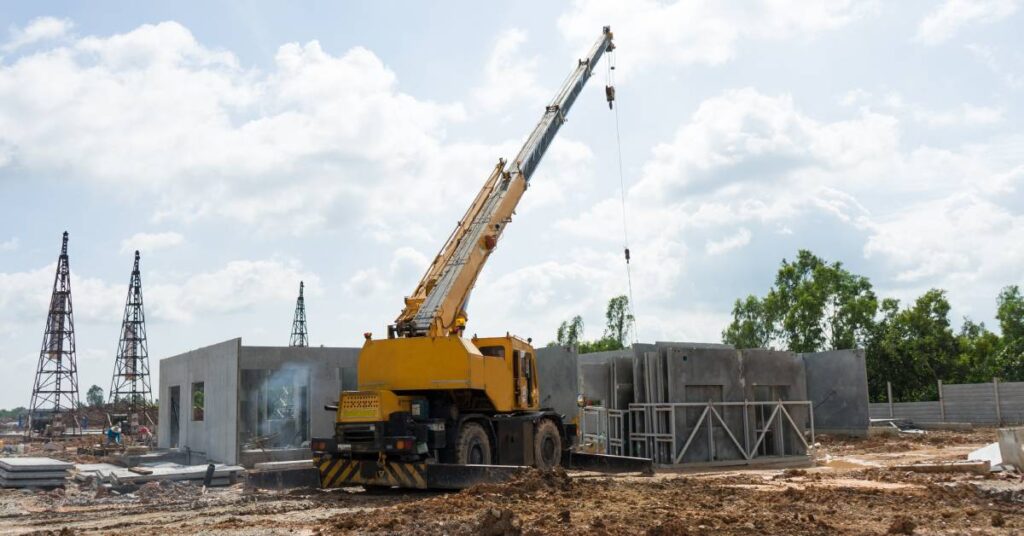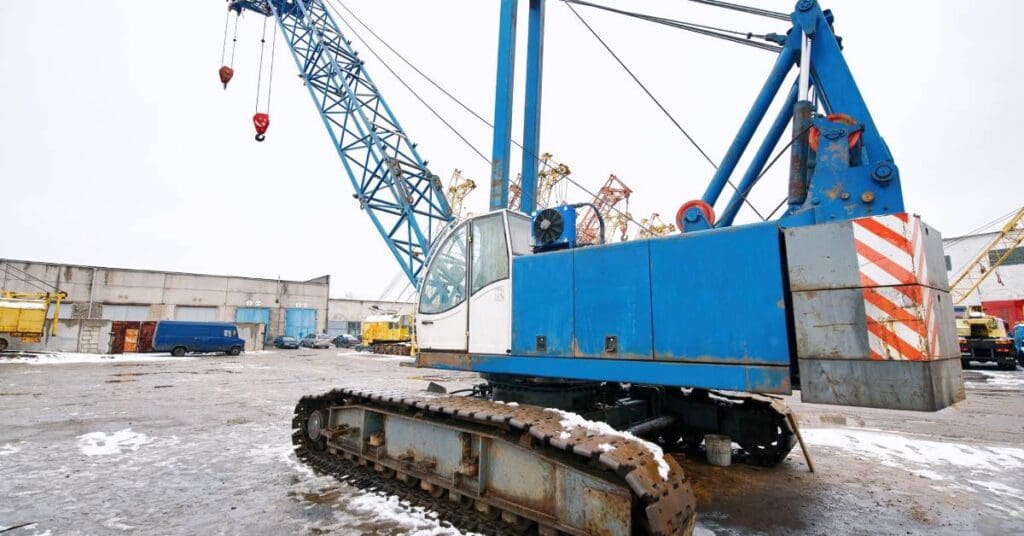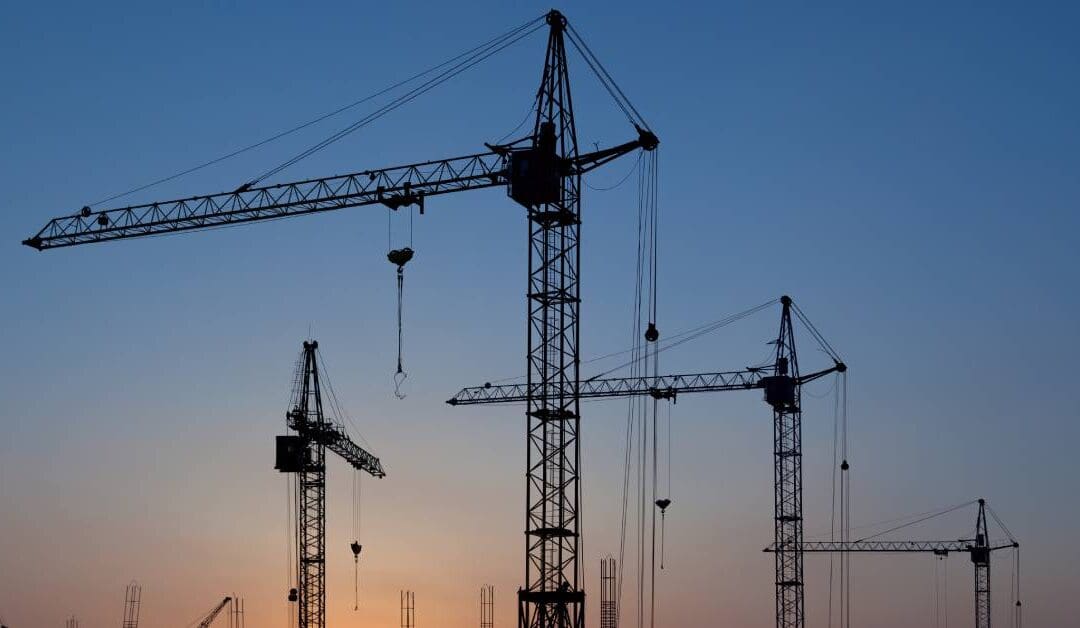HVAC installations require careful planning and the right equipment. With different locations to install an HVAC unit, it is essential to determine what kind of crane to use throughout the process. Working with the wrong crane can set back the project and increase costs. Understanding your options is the best way to ensure project success.
Why Use Cranes for HVAC Installations?
Project managers won’t need to use cranes for HVAC installations with small units. However, this is not a feasible option with large units.
Workers cannot install HVAC units on the top of tall buildings or in between complex ductwork without a crane. To lift a heavy HVAC unit into the designated location—whether it’s on top of a building or in a hard-to-access area—workers must utilize a crane.
There are several different types of cranes to choose from. Determine which design will work best for your project by reading the options listed below.
Mobile Cranes: Excellent Versatility
Mobile cranes offer exceptional flexibility for HVAC installations because these mobile units can navigate jobsites efficiently. They feature reliable lifting capabilities that are well-suited for most residential and commercial applications.
Truck-Mounted Cranes
Truck-mounted cranes combine mobility with lifting power. Capable of handling loads from 25 to 300 tons, they can accommodate most rooftop unit installations. Their quick setup time minimizes project delays, while their ability to position close to buildings reduces the distance of lifts.
With their compact design, they can get into tight spaces where large equipment cannot operate effectively. This makes them particularly valuable for urban installations or sites with limited access roads.

All-Terrain Cranes
All-terrain cranes provide superior maneuverability on challenging jobsites. These units combine the mobility of truck-mounted cranes with enhanced lifting capacity and extended reach. They excel in installations requiring precise positioning over obstacles or in areas with uneven terrain.
With excellent four-wheel drive capability, all-terrain cranes’ outrigger systems ensure stability on a wide range of surfaces. This stability becomes crucial when installing heavy HVAC units on multistory buildings or in windy conditions. The telescopic booms can extend great distances.
Tower Cranes: High-Rise Solutions
With tower cranes, site managers can overcome installation challenges with tall buildings. The stationary units offer exceptional lifting capabilities and precise control for complex projects.
Fixed Tower Cranes
Major construction projects and large-scale HVAC renovations are common situations for using fixed tower cranes. They can easily handle the heaviest commercial HVAC units while still maintaining precise control throughout the lifting process.
Planning is a requirement for fixed tower cranes because workers must install the machine at the worksite to establish the machinery’s fixed position. This essential step might result in higher costs in comparison to mobile alternatives. Nevertheless, fixed cranes are strong and offer a high lifting capacity and reach.
Self-Erecting Tower Cranes
Self-erecting tower cranes are a combination of mobile and fixed tower cranes. Workers can set up self-erecting tower cranes quickly without requiring additional assistance on medium-scale HVAC projects that exceed the capabilities of mobile cranes.
Urban worksites can utilize these tower cranes, as they are more suitable for working in confined areas. Their quick setup doesn’t require additional crane assistance. With a smaller setup requirement, they are a more realistic option compared to fixed tower cranes.
Specialty Cranes: Accommodate Unique Challenges
Some HVAC installations require specialized lifting solutions due to site constraints, access limitations, or unique equipment requirements. Understanding these specialty options enables contractors to tackle challenging installations more effectively.

Crawler Cranes
Crawler cranes excel in installations requiring exceptional stability and lifting capacity on uneven or soft ground. Engineers designed the undercarriage to distribute the weight of the crane evenly. As a result, the crane prevents ground damage and establishes a stable lifting platform for heavy HVAC equipment.
Construction teams use these cranes in areas where the ground conditions wouldn’t support wheeled cranes moving throughout the site. From accommodating slopes to rugged terrain, crawler cranes are suitable for installations at manufacturing facilities, remote locations with challenging access conditions, and more.
Pick and Carry Cranes
Pick and carry cranes offer advantages for installations that require the movement of equipment between multiple locations. The compact units can lift HVAC components and transport them across jobsites without the need for additional handling equipment.
Maneuverability is one of the reasons that pick and carry cranes are popular for warehouse and industrial HVAC installations because there must be units in multiple locations. The machinery’s ability to navigate tight spaces while carrying loads makes it more efficient than traditional crane and transport combinations.
Additional Project Considerations
Consider what your worksite needs for an HVAC unit installation project. Then, focus on which crane option is the best according to the project specifications.
The HVAC equipment’s weight and size directly impact crane requirements. Commercial units can weigh several tons and require cranes with a lifting capacity that exceeds their weight, plus adequate safety margins.
Site access is another consideration. Urban and rural installations will require different options and hurdles to cross. Urban areas require compact cranes that can navigate narrow roads, while rural locations can accommodate large units with high lifting capabilities.
Next, determine the height and radius that the crane must accommodate. Take into account obstacles and positioning limitations that may affect crane placement. By calculating the required boom length and lifting height carefully, you can select the appropriate crane for the project.
Make the Best Choice for a Successful Project
Every project has particular requirements based on the structure and the environmental conditions. Successful HVAC installations depend on working with the right type of crane that caters to all of the project’s specifications. Taking the time to evaluate the equipment options and select the appropriate design pays dividends in terms of project efficiency and safety.
If you’re looking for a reliable crane company in Louisiana, come to Heave Ho! Crane & Rigging for high-quality cranes and overall service. With our three decades of experience, we can help you find the best crane for the project. From HVAC installations to constructing new buildings, we can help you find exactly what you need. Contact us today to learn more about our services and request a quote.

